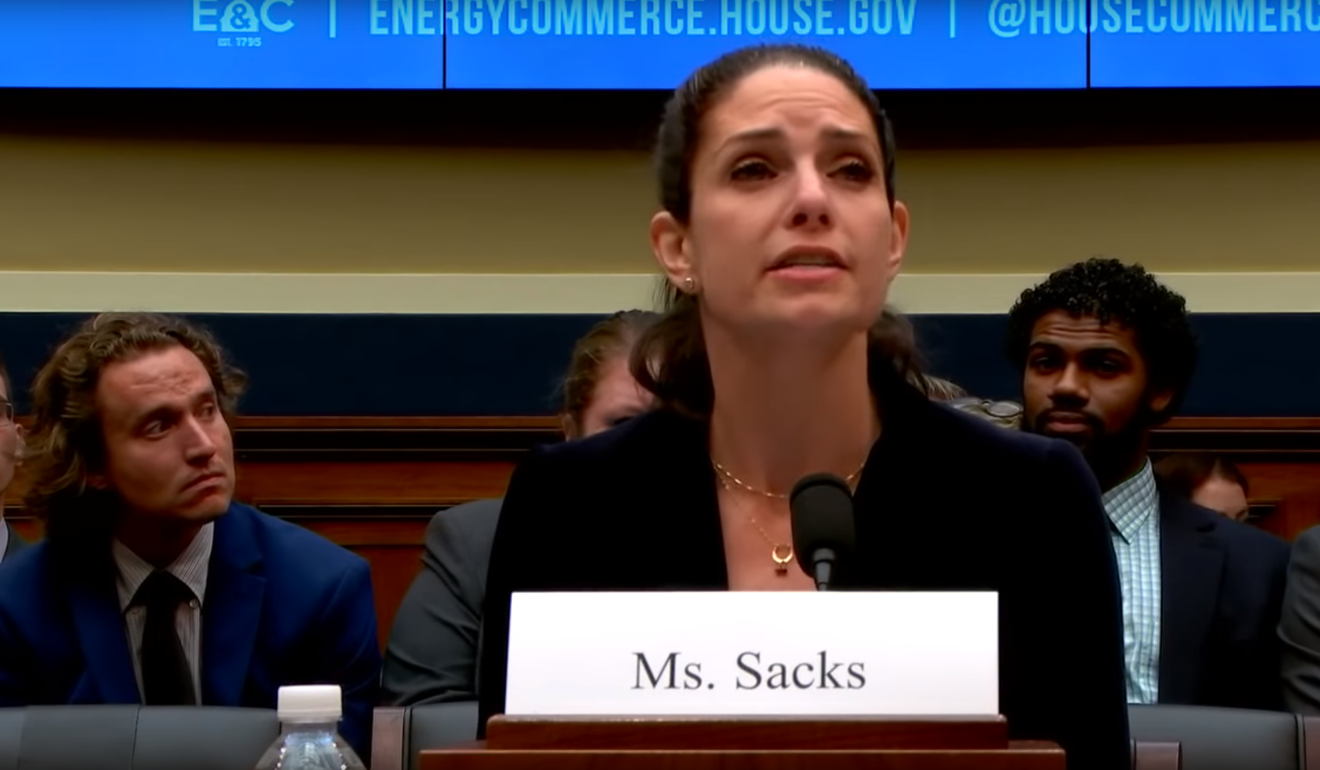Tethered by the supply chain: US tech community resists Donald Trump’s China tariffs, fearing collateral damage
The Trump administration’s hard line on trade has shone a spotlight on just how much US tech suppliers depend on Chinese business

As political momentum builds to punish China for intellectual property theft and forced technology transfers, the Trump administration has met with resistance from an unlikely source: the technology industry itself.
US trade groups, think tanks and academics are pushing back on the harsh measures proposed for Chinese tech companies, returning the spotlight to the issue of technological interdependence in a global economy.
In testimony last month before the US House of Representatives, Samm Sacks, a senior fellow specialising on tech policy at the Washington-based research firm Centre for Strategic & International Studies, said: “In confronting China, we must have a clear understanding about the consequences of our actions and where there will be costs to ourselves.”
“The challenge is that the US’s and Chinese technology developments, supply chains, commercial markets are tightly intertwined,” Sacks told the House Energy and Commerce Subcommittee on Communications and Technology.
“Unilateral actions that isolate the United States will undermine US economic prosperity, our technological leadership and our capacity for innovation.”
Sacks is among the many voices responding to the Trump administration’s threat of harsh trade measures against China.
US corporations acknowledge the intellectual property theft China relies on by requiring foreign companies to transfer technology if they want to enter China’s markets; even so, in recent weeks, the corporations have expressed concerns about how far the US should push to rein in China, for fear of hurting American companies.
The opposition highlights a sobering reality that the world’s two largest economies have grown to depend on each other in technology developments so much that imposing penalties on Chinese companies inevitably makes US businesses casualties of collateral damage.
Testifying in Washington at a public hearing of the Section 301 Committee – part of the US Trade Representative's office that addresses trade disputes – Josh Kallmer of the Information Technology Industry Council said that “the companies that are engaged both in the production of goods and supply of services have really complex global supply chains that cannot just be picked up and moved”.

He added: “Supply cannot just be rendered from another market. It takes years to renegotiate contracts. It takes years to move physical equipment.” Kallmer’s group represents 66 global hardware, software and service companies, including Qualcomm and Intel Corp.
In a recent research report on US-China trade tension, JP Morgan found that “reshuffling and relocating production lines to either the US or other major tech-exporting countries would involve a significant amount of resources and capital and be a rather time-consuming process” – again citing the heavily integrated nature of the tech supply chain.
The consequences of such a high degree of interdependence manifested itself in April when the US Department of Commerce prohibited ZTE Corp, the Chinese telecoms giant, from buying US components for seven years for violating US sanctions against Iran and North Korea.
Trump said at the time that ZTE’s violations were a national security concern, and the hard line the commerce department was taking was in keeping with the president’s threats to place tariffs on up to US$150 billion in Chinese imports.
As recently as last week, Peter Navarro, US National Trade Council director and the White House adviser on trade, said that the US had “to stand up to Chinese economic predation”.
But the ZTE ban inflicted immediate financial pain on its American suppliers and business operations.
ZTE built a research and development centre in the US in 1998 and has since established close business ties with numerous large US companies. The ban pushed shares of ZTE’s major US suppliers sharply lower.

Within a week, market capitalisation of Qualcomm, which has a partnership with ZTE to develop global networks standards, dropped by more than US$8 billion. Stock of Oclaro, which provides optical components to ZTE, slid 15 per cent within a day.
Shares of Acacia Communications, which sells fiber-optic chips to ZTE, lost more than a third in value within a day, hitting an all-time low. Acacia said that ZTE accounted for about 30 per cent of its revenue in 2017.
Acacia’s chief executive Raj Shanmugaraj told shareholders that “the denial order will have an adverse impact on our business for the foreseeable future”.
Wall Street analysts cut Acacia's 2018 revenue outlook to drop 26 per cent following the ZTE ban, from a 4-per cent drop they had predicted earlier.
Within a few weeks of the ZTE ban, Trump wavered from his tough stance despite the seriousness of the ZTE breach.
In a surprising tweet on May 13, Trump said he had asked the Commerce Department to get ZTE back into business, fast. The severity of the damage US tech companies endured was at least part of the many reasons for such sudden change.
Following up the next day, Trump defended his decision, tweeting that ZTE’s shutdown would hurt American companies as well: “ZTE buys a big percentage of individual parts from U.S. companies.”
ZTE, the large Chinese phone company, buys a big percentage of individual parts from U.S. companies. This is also reflective of the larger trade deal we are negotiating with China and my personal relationship with President Xi.
— Donald J. Trump (@realDonaldTrump) May 14, 2018
Shares in Qualcomm, Acacia and Oclaro have been up since.
On Tuesday, ZTE was reported to have reached an agreement in principle with the US to lift the initial ban on purchasing US components in exchange for paying a fine of US$1 billion and place US$400 million in escrow against possible further infractions, a resolution hotly contested by trade hawks.
In response to the news, Senator Chuck Schumer, the New York Democrat who is the Senate minority leader, said in a tweet that “By letting ZTE off the hook, the president who roared like a lion is governing like a lamb when it comes to China.”
ZTE is just one small component in the broader US-China tech landscape. Data from Rhodium Group, the research firm, show as much as 94 per cent of total Chinese investment from China in the US comes from mergers and acquisition, aside from the investments made by equipment manufacturers like Huawei and ZTE.
If these reports are true, @realDonaldTrump has put China, not the United States, first. By letting ZTE off the hook, the president who roared like a lion is governing like a lamb when it comes to China. Congress should move in a bipartisan fashion to block this deal right away. https://t.co/ehRxD8b8bl
— Chuck Schumer (@SenSchumer) June 5, 2018
Since 1990, Chinese companies have invested a total of US$17 billion in the US tech sector, more than 75 per cent of that in the last four years, according to Rhodium.
US corporations invested US$41.3 billion in the Chinese tech sector in the same period by building businesses in the country and acquisitions. More than a third of that amount was invested just since 2014.
“Today, very little technology is really only from one country,” said John Scannapieco, co-chair of the global business team at Baker Donelson, a national law firm which represents international clients in cross-border transactions.
“We need to remember and understand the world is interconnected now and will become more so despite trade tensions.”
US lawmakers have to confront the decision and strike a balance between ending China’s harmful trade practices and hurting business at home along the way.
And striking that balance has so far proven difficult.